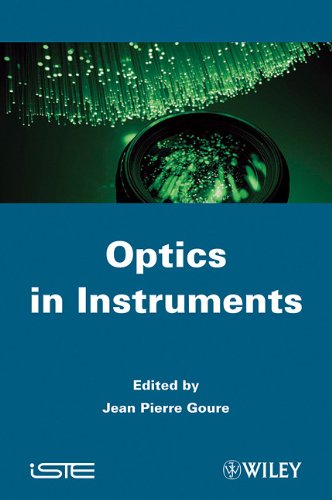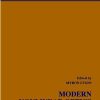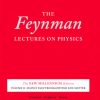Optics in Instruments 1st Edition by Jean Pierre Goure ISBN 1848212437 9781848212435
$50.00 Original price was: $50.00.$35.00Current price is: $35.00.
Optics in Instruments 1st Edition by Jean Pierre Goure – Ebook PDF Instant Download/Delivery:1848212437, 9781848212435
Full download Optics in Instruments 1st Edition after payment

Product details:
ISBN 10: 1848212437
ISBN 13: 9781848212435
Author: Jean Pierre Goure
The role of optical instruments is very important and affects all areas of human activity, from scientific analysis (such as spectrometry) to recreation and leisure pursuits like photography and television. Optical components are often an essential part of the instrument, but are not always visible. It is therefore useful and important to understand how they work.
In this book the reader will find both a review of the most important components currently used, the theoretical foundation for their application, and an example of evolution. To do this, we first supply the basic knowledge in optics necessary for the understanding of the instruments: geometrical optics, photometry, colorimetry, image analysis and processing, as well as a short description of the sources used: lamps, lasers and semiconductor sources. Optical systems such as zoom lens under different illuminations are discussed. As a first example of application, the evolution of microscopy, up to the most recent technological progress, are given.
Table of contents:
Chapter 1 Optics and Instruments Jean-Pierre Goure 1
1.1 Introduction 1
1.2 The media and optical communications 2
1.3 Instruments for image capture 3
1.3.1 Classic image-capture instruments 3
1.3.2 Seeing even further 3
1.3.3 Seeing and measuring small objects 4
1.3.4 Improving the image 5
1.4 Optics in industrial processes 5
1.4.1 Metrology and production contro 5
1.4.2 Process control 7
1.4.3 Transformation of matter and shaping of materials 7
1.5 Optics and the medicine 8
1.6 Research 9
1.7 The basic components of an instrument 9
1.8 Bibliography 11
Chapter 2 Formation of Images Henri Gagnaire 13
2.1 Introduction to optics 13
2.2 Study of a centered system under Gaussian conditions 19
2.2.1 Main elements of a centered system 19
2.2.2 Another form of the Lagrange-Helmoltz relation 22
2.2.3 Nodal points 23
2.2.4 Relation between the object and image space focal lengths – optical power 24
2.2.5 Cartesian and Newtonian equations 25
2.2.6 Longitudinal magnification 28
2.2.7 Association of centered systems 29
2.2.8 Spherical refractive surface 31
2.2.9 Lens 32
2.3 General facts about optical instruments 33
2.3.1 Introduction 33
2.3.2 Size of the image 34
2.3.3 Field 37
2.3.4 Conclusion 40
2.4 Geometric aberrations 41
2.4.1 Introduction 41
2.4.2 Relation between wavefront aberrations and transverse ray aberrations 42
2.4.3 The different types of aberration 44
2.4.4 Seidel aberrations 46
2.4.5 Conclusion 55
2.5 Chromatic aberrations 56
2.5.1 Introduction 56
2.5.2 Some definitions 57
2.5.3 Apparent achromatism of doublets 59
2.6 Conclusion 60
2.7 Bibliography 51
Chapter 3 A Revision of Photometry and Radiometry Jean-Louis Meyzonnette 63
3.1 Introduction: the role of photometry and radiometry 63
3.2 The main values of an optical radiation 64
3.2.1 Flux (F) 64
3.2.2 Solid angle (Q) 65
3.2.3 Intensity (I) 57
3.2.4 Geometric extent (G) 68
3.2.5 Radiance (L), exitance (M) 69
3.2.6 Irradiance E 70
3.2.7 Spectrum 71
3.2.8 Radiometric units 72
3.3 Relations between radiometric parameters of a radiation 73
3.3.1 General relations between geometric parameters 73
3.3.2 Particular case of radiations with uniform radiance 76
3.3.3 Relations between energetic, photonic and visual parameters 80
3.4 Some photometric properties of optical instruments 84
3.4.1 Conservation of the geometric extent of a beam in an optical medium and its transfer by an optical interface 84
3.4.2 Effects of refraction and reflection on radiance 85
3.4.3 A revision of instrumental optics 86
3.4.4 Photometry of an imaging system 90
3.4.5 Photometry of a “flux collector” instrument 92
3.5 Bibliography 93
Chapter 4 Light Sources for Optical Instruments Jean-Pierre Goure Isabelle Verrier 95
4.1 Generalities about sources 95
4.2 Emission light 96
4.2.1 Coherence of sources. 96
4.2.2 Sources characteristics 98
4.2.3 Different types of sources 99
4.3 Lamps 100
4.3.1 Incandescent lamps 100
4.3.2 Halogen lamps 102
4.3.3 Luminescent discharge sources 103
4.4 Lasers 109
4.4.1 Definition and general characteristics109
4.4.2 Gas lasers 118
4.4.3 Solid-state lasers 120
4.4.4 Optical parametric oscillators 122
4.4.5 Fiber lasers 123
4.5 Diodes 127
4.5.1 Light-emitting diodes 127
4.5.2 Laser diodes 132
4.6 Remote sources and optical power supply 135
4.7 Bibliography 135
Chapter 5 Colorimetry Eric Dinet 137
5.1 Introduction 137
5.2 Color and the observer 139
5.2.1 The physical stimulus 140
5.2.2 The human visual system 143
5.3 The foundation of colorimetry 148
5.3.1 Tristimulus values 152
5.3.2 Chromaticity diagram 153
5.4 Perception of color differences 155
5.4.1 CIE 1976 L*u*V* color space 157
5.4.2 Cffi 1976 L*a*b* color space 157
5.4.3 The problem of dark colors 158
5.5 Evaluation of color differences 159
5.5.1 Color deviation equations based on CIE 1976 color spaces 160
5.5.2 Notes about CIE 1976 color spaces 161
5.5.3 CMC (l:c) color formula 162
5.5.4 CIE 1994 formula 163
5.5.5 CIE DE2000 total color deviation formula 164
5.6 Interpreting color deviations and color tolerancing 166
5.7 Conclusion 168
5.8 Bibliography 169
Chapter 6 Bases for Image Analysis Michel Jourlin 173
6.1 Introduction 174
6.1.1 What is an image? 174
6.1.2 Digitization of the spatial support 176
6.1.3 Digitization of gray scale 179
6.2 Classification of the image 180
6.2.1 Earliest tools for classification: thresholding, multi-thresholding, contour detection 180
6.2.2 Perspectives towards more complex tools 191
6.3 Interpretation of binary images 192
6.3.1 Measurements 193
6.3.2 Parameters of shape 197
6.3.3 Binary mathematical morphology 198
6.3.4 Correction of a squared grid 204
6.4 Gray level mathematical morphology 207
6.5 An example of a non-linear model: the LIP (Logarithmic Image Processing) model [Jou 01] 208
6.5.1 Initial physical framework 208
6.6 Conclusion 210
6.7 Bibliography 212
Chapter 7 Optics for Imaging: Definition, Manufacturing, Applications Gerard Corbasson Jacques Debize Thierry Lepine 215
7.1 Lenses for photography 215
7.1.1 Fixed focal length lenses 217
7.1.2 Zoom lenses 222
7.2 Lenses for cinema and television 223
7.2.1 Cinema 223
7.2.2 Television 226
7.2.3 Manufacture 229
7.3 Optics in astronomy 230
7.4 Bibliography 233
Chapter 8 Optics for Images at Low Light Levels Joel Rollin 235
8.1 Introduction 235
8.1.1 Active imagery 235
8.1.2 Low light level passive.imagery 236
8.1.3 Infrared thermography 236
8.2 Light intensification devices 238
8.2.1 Different sensor technologies: light intensification tubes 243
8.2.2 Different sensors: video-compatible solutions 244
8.2.3 Optics for LLL systems 246
8.3 A case apart: the SWIR band 255
8.3.1 The interest of the SWIR band 255
8.3.2 SWIR sensors 256
8.3.3 Optics for the SWIR band 256
8.4 The3-5 umand8-12 umbands 257
8.4.1 The different types of sensors and the design constraints relating to optics 257
8.4.2 Optical materials in the IR band 261
8.4.3 Rather special optical components 264
8.5 The future 265
Chapter 9 From the Classic Microscope to the Tunnel Effect Microscope Michel Spajer 267
9.1 Introduction 267
9.2 Towards the limit of resolution. Aspects of the formation of images 268
9.2.1 Transfer function 268
9.2.2 Transfer function in coherent illumination 271
9.2.3 Aberrations 272
9.2.4 ransfer function in partially coherent illumination 275
9.2.5 Transfer function in incoherent illumination 275
9.2.6 Structured illumination, synthetic pupil 277
9.3 The confocal microscope 278
9.3.1 Coherent confocal microscope 279
9.3.2 Incoherent confocal microscope (fluorescence) 280
9.3.3 4Pi synthetic aperture 282
9.3.4 Stimulated emission depletion (STED) confocal microscope 283
9.4 Adaptive optics 284
9.5 Polarized light 285
9.6 Phase microscopies 286
9.6.1 Absolute interferometric phase-shifting measurements 287
9.6.2 Measurements based on a single interferogram 289
9.6.3 3D holographic microscopy 290
9.7 Confined light microscopy techniques. Evanescent waves 291
9.8 Near-field local probe microscopy 292
9.9 Bibliography 293
9.10 Glossary of terms used 295
People also search for:
optical instruments in ray optics
yoder mounting optics in optical instruments
mounting optics in optical instruments pdf
mounting optics in optical instruments
ray optics and optical instruments in hindi
Tags:
Jean Pierre Goure,Optics,Instruments



